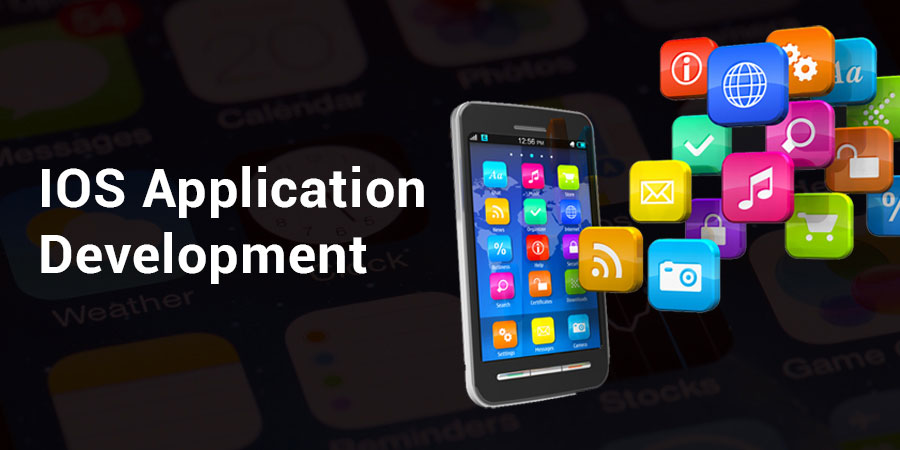Introduction to iOS Development
iOS development refers to the process of creating applications for Apple’s mobile operating system, iOS, which powers millions of devices, including the iPhone and iPad. The journey of iOS development began in 2007 with the launch of the first iPhone. Since that time, Apple has continually evolved iOS, incorporating advanced features, enhanced user interfaces, and robust APIs that developers leverage to build innovative applications.
Today, the iOS ecosystem is a vital component of the global technology landscape, offering a rich platform for application development. As of 2023, iOS has gained a significant market share, capturing a considerable portion of the mobile user base worldwide. With the App Store housing millions of applications, iOS developers have the unique opportunity to reach a massive audience while contributing to a thriving ecosystem.
The importance of iOS development lies not only in the technology itself but also in its impact on businesses and consumers. With the growing reliance on mobile devices, organizations are increasingly looking to develop custom apps to enhance their services, streamline operations, and engage customers. This demand has resulted in a robust job market for iOS developers, highlighting the variety of career opportunities available in this field.
As one delves into iOS development, several fundamental concepts come to the forefront, including the Swift programming language, Xcode IDE, and the Model-View-Controller (MVC) architecture. Each of these elements is essential for building efficient, user-friendly applications that cater to the needs of end-users. In the following sections, we will explore these key components in greater detail, equipping aspiring developers with the knowledge they need to embark on their iOS development journey.

Essential Tools and Languages for iOS Development
iOS development relies heavily on a suite of tools and programming languages designed to streamline the creation of applications for Apple’s ecosystem. Central to this process is Xcode, Apple’s official integrated development environment (IDE). Xcode offers a comprehensive set of tools for designing, coding, testing, and debugging applications. Built specifically for macOS, Xcode supports the latest iOS SDKs, facilitating access to the most up-to-date features and resources essential for developers. This environment provides developers with powerful code editing capabilities, a user interface design tool called Interface Builder, and an integrated simulator for testing apps on various devices.
Among the programming languages utilized in iOS development, Swift and Objective-C stand out. Swift, introduced by Apple in 2014, is a modern, fast, and safe language. Its syntax is designed to promote clarity and ease of understanding, making it a preferred choice for new projects. Swift incorporates features that support both imperative and functional programming styles, enhancing its versatility and making it easier for developers to write expressive code. In contrast, Objective-C has been a cornerstone of iOS development for many years. It operates on a runtime model that allows for dynamic messaging and is known for its rich set of features that support object-oriented programming.
In addition to the IDE and programming languages, various development kits and libraries further ease the app creation process. Frameworks such as UIKit, SwiftUI, and Core Data provide developers with pre-built components and functionalities that are essential for building performant, user-friendly applications. UIKit, for example, is vital for creating graphical user interfaces, while SwiftUI allows for declarative UI programming, simplifying the creation of complex interfaces. Together, these tools and frameworks form a robust ecosystem that supports the entire iOS app development lifecycle.
The iOS Development Process: From Idea to App Store
The journey of iOS mobile development begins with an idea, which is then transformed into a fully functional application. This comprehensive process can be divided into several critical stages that ensure the app not only meets user needs but also adheres to Apple’s stringent guidelines for App Store approval.
Firstly, brainstorming ideas is essential in identifying the target audience and core functionality of the application. Following this conceptual phase, developers often engage in planning sessions to outline features, develop user stories, and establish a timeline for the project. Wireframing becomes the next focal point, where the app’s layout and user interface are sketched out. This visual representation allows for a better understanding of the user experience and facilitates more informed design decisions.
Once the wireframes are complete, designers produce high-fidelity mockups that depict the final design of the application. This stage emphasizes the importance of aesthetics and usability, ensuring the app is not only visually appealing but also intuitive to navigate.
After finalizing the design, the actual coding begins, where developers utilize Swift or Objective-C, the primary programming languages for iOS development. At this stage, developers integrate APIs and manage data connections, laying the foundation for the app’s functionality. Rigorous debugging follows, allowing developers to identify and rectify any issues that may affect performance or user experience. Quality assurance is paramount during this phase, as it involves thorough testing across various devices to ensure compatibility and smooth operation.
Finally, once the application is polished and fully functional, it is prepared for submission to the Apple App Store. This phase requires adherence to specific guidelines set forth by Apple, including user privacy, app security, and content policies. Following best practices for App Store optimization (ASO) boosts the chances of approval and enhances visibility. Overall, mastering the iOS development process is crucial for releasing a successful application that resonates with users while maintaining compliance with Apple’s standards.
Staying Updated: Trends and Resources in iOS Development
In the rapidly evolving landscape of iOS mobile development, staying current with the latest technologies and methodologies is vital for developers to maintain a competitive edge. One significant trend is the rise of cross-platform tools like React Native and Flutter. These frameworks enable developers to create applications compatible with both iOS and Android platforms, significantly reducing development time and effort. By utilizing these tools, developers can streamline their projects while still delivering high-quality, native-like experiences.
Another noteworthy trend is the integration of machine learning into iOS applications. With Apple’s Core ML framework, developers can easily incorporate advanced machine learning capabilities into their apps. This trend not only enhances user experience through personalization and smarter functionalities but also positions developers as vital contributors in a market increasingly driven by data-informed insights.
Augmented reality (AR) is also making remarkable strides within the iOS ecosystem. Apple’s ARKit framework allows developers to build immersive experiences that blend the virtual and real worlds. As more brands invest in AR to engage users, proficiency in this area becomes a valuable asset for any iOS developer.
To keep skills sharp in the face of these trends, continuous education is essential. Numerous online platforms offer courses dedicated to iOS development, providing resources for developers to learn at their own pace. Websites like Udemy, Coursera, and Apple’s own developer resources feature a range of subjects from basic programming to more advanced topics such as AR development and machine learning implementations.
Participating in online forums and developer communities is another effective way to stay abreast of industry advancements. Platforms like Stack Overflow and GitHub not only provide support for troubleshooting but also facilitate knowledge exchange among developers. Engaging with fellow enthusiasts through meetups, webinars, and conferences can further enhance professional growth. By leveraging these resources, developers can ensure they remain informed and capable in this fast-paced environment.



Yasith Prabaswara
Nice content